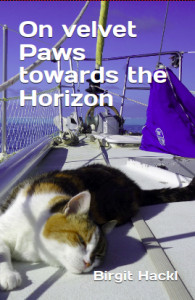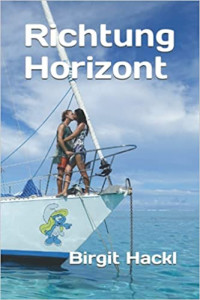Yesterday it was blowing hard from the Southeast again, we set the windvane to ‘go-as-hard-as-you-can’ and Wayne Vaney sailed Pitufa straight towards Niue. When we contemplated the evening grib, we found that he was probably right: there’s a phase with easterly winds coming up–no good beating into that. Instead we decided to take a break in Niue and wait for the next clocking of the wind.
In the evening the wind freshened up even more during a squall, of course just then the fishing line stretched out and Christian and I cried out at the same time: oh, no! Fish always seem to bite in the least convenient conditions. Christian had to tie himself to the backstay with the harness, while he was fighting the biggest mahi-mahi we’ve caught so far. Butchering the 1.5 m fish on the stomping aft deck was a bloody mess, but at least we have the fridge full of fish again, a very happy cat and enough to give out some to our neighbours in the buoy field of Niue.
We arrived in Niue at 2 o’clock in the morning, but knowing the mooring field from our last stop here (who would have thought that we’d come back so quickly…) it wasn’t a big deal to pick up a buoy in the dark. This morning we cleaned the salt of the decks outside and the passage-chaos inside and now we’re waiting for the officials to check us into the country.






